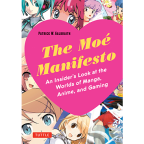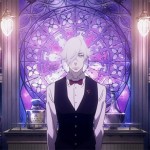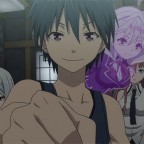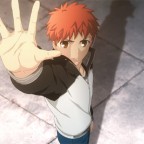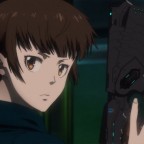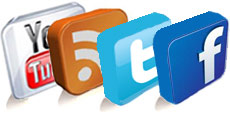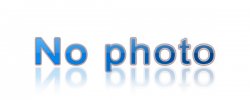Is Moe Contributing To Anime?

There exist acquired tastes in life. Flavors you might not have liked before but now feel an urge to experience from time to time. And they grows on you, like that itch for spicy food or the craving for just on more cup of coffee. Such is moe – an acquired taste for some and that piece of dreaded spinach for others. There’s no denying that moe is a money-printing machine that will continue to play a big part in the visual styles of anime in the years to come. But is moe contributing to anime? And where exactly do we draw the fine line between suggestive moe and outright hentai?
“Moe is crap! Give me moar moe! Leave my waifu alone! This show is fapulous! Moe is killing anime!”
The above citation contains some of the more common comments people tend to leave in threads about moe shows. And they sum up the reputation of moe pretty well. Some loathe it, others love it and a silent minority stands in middle and makes the best of it. For the better part of the aughts I was firmly rooted in the first camp. Despite enjoying the rarity that was Lucky Star (a series that made fun of moe years before most people knew what moe even means) I’ve mostly experienced the bitter side effects of moe. This came about in the form of ecchi and semi-pornographic series that kept creeping into the broadcast schedule, mostly in late night hours. I angrily stopped watching 2002’s Kannon 10 minutes into the first episode. I felt violated after watching a few episodes of the god-awful He is My Master in 2005. In 2008 the third season of Zero no Tsukaima took out all the action that I liked and replaced it with boob shots and cheap shower scenes.
Being the type A otaku that I am watching anything moe at that time insulted my intelligence. But as it were I was a minority. Studios sway to where money beacons, and there sure was money to be had in moe. By 2009 the moe aesthetics had taken Akihabara by storm and I found myself facing my greatest foe yet: the almighty K-ON!
Watching K-ON! was a temptation regular anime fans could not stand up against. So popular and talked about was K-ON! that I found myself watching it in its entirety just to be “in the known”. I didn’t like it. In fact, I immediately went out of my way and (politely) insulted those that did. Then came the second season of that demonic show and for some unholy reason I watched it as well. This time I liked it. Very much in fact. It reminded me something I had almost forgotten over the years – that great animation and cuteness can go a long way in making an anime a pleasure to watch. Luckily it led me to understand that not all moe is otaku-bait. “Some moe”, I said to myself in a rare moment of self-denial, “might be intelligent and artistic enough for me to accept as art!”
I was only half right.
Moe is a building block
As time went by good anime that was also sprinkled with moe started to catch my interest. Ef – a Tale of Memories had such a spectacular vision and depth behind it that it was easy for me to forget its moe roots. Sora no Woto had enough symbolism to make me turn a blind eye and Strike Witches won me over with its second to none action scenes. As you can see my subjective rejection towards moe hasn’t subsided in the slightest. The moe shows I chose to watch were nitpicked under the assumption that entertainment and quality are king. In other words: if I enjoyed an anime and the quality of the plot, drawing and animation were high I gave it a green light despite the noticable moe elements. Later, when self-aware parody moe started to appear again (Milky Holmes and the K-ON! movie spring to mind) I finally understood what moe can do best: enhance things. Moe is not a genre. An entire series can’t be built around moe, because moe is a building block – a set of faces, features, ideas and memes that are added to an existing series’ structure. I’m not the first to refer to moe in structural terms. In his book Otaku – Japan’s Database Animals Hiroki Azuma already referred to the entire otaku culture as one that looks for certain patterns in every anime, manga and game. But unlike Azuma I see the addition of moe elements (while in good taste) as constructive. Series that try to build themselves around the idea of moe and moe alone have failed miserably because they inevitably made concessions in order to push more moe forward (concessions such as dumbing the plot down and abandoning environmental realism and believable human relationships). However a cute gesture here and a fetishy prop there can certainly enhance an otherwise dead-serious show. Just ask Tsunemori Akane from this year’s Psycho-Pass. Or better yet be reminded of the moe megane fetish brought forth single-handadly by Yomiko Readman from the Read or Die OVA in 2002. Moe can be used to make things more appealing. The K-ON! movie, for example, is great since it depicts the mentality of the common Japanese tourist perfectly. The moe jabs in it are just the topping on an already glazed cake, but they make it that much sweeter.
Drawing the fine line between moe and hentai
Although I consider myself a somewhat conservative anime viewer I nevertheless understand the connection between moe and sexuality. Moe characters can have sexy traits and sexy characters can be moe. Because of that Moe and ecchi go hand in hand in some cases. Not so with hentai. There is no such thing as a moe series with hentai elements. There are only hentai series with moe elements. So a series created only to stimulate men (for lack of a less offensive definition) that has moe elements is still a hentai and nothing more. This logic is also reversible: moe is not hentai and the use of moe in non-hentai series should be regarded to as fan-service. If the moe is presented in an overly sexual envelope perhaps you should be asking yourself if the show you are watching isn’t some type of soft hentai. That is the fine line between moe and hentai, and even someone as easily offended as me can accept that there are moe elements that cater to certain fetishes without crossing into the hentai zone.
That extra feature
So is moe destined to consume anime whole? From my perspective it most certainly will not. On the contrary – it will become more refined. There will come a time when even the most ardent otaku will become fed up with watching the same stereotype moe girl appearing again and again. The character designers will inevitably need to make moe more subtle, like an extra feature that sweetens the deal without always being in your face. On the other hand, moe isn’t going anyway. Since successful moe series tend to be ludicrously lucrative anime companies will undoubtely keep on churning them out. A gradual assimilation of moe elements into the general anime culture in the near future seems only natural. In fact you probably already noticed this in the last couple of seasons. Is this assimilation contributing to anime as a whole? Perhaps so. Some will claim that it adds attractive qualities, while other will continue to claim that it detracts from the overall experience. One way or the other though, moe is definitely here to stay.


